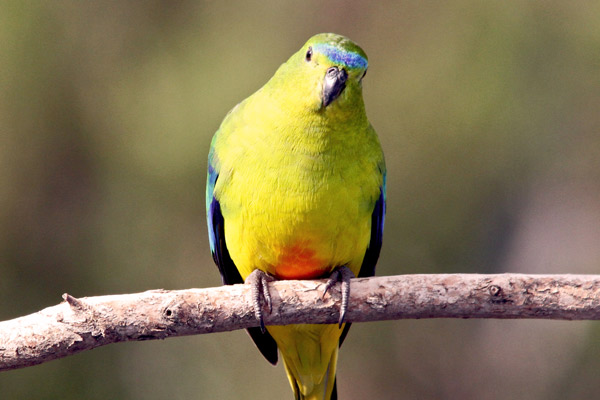Less than 10 wild breeding pairs of the critically endangered orange-bellied parrot, Neophema chrysogaster, migrated to their Tasmanian breeding grounds in November last year.
The parrot, which is just slightly larger than the budgerigar, routinely migrates from wintering grounds in South Australia and Victoria to appear in Melaleuca, Tasmania during the warmer months.
Its decline has been brought about predominantly as a result of the fragmentation and degradation of its wintering territories, as well as the introduction of feral predators and competitors.
However, the dedication of an intensive breeding and reintroduction program that centres on Melaleuca is meeting with some success.
Rosemary Gales from Tasmania’s Department of Primary Industries, Parks, Water and Environment (DPIPWE) told ABC that 24 individuals had been released in the Melaleuca area last year, with 34 returning for this year’s breeding season.
“Some of the adults that we released last year have undertaken the migration north and come back south, so that’s a fantastic result,” Gales said.
“In addition, some of their offspring – so they fledged chicks at Melaleuca last year and those chicks have retained their genetic memory and successfully migrated back.”
As a result, more breeding pairs should mean an even larger population returning next year, however the population’s tiny size leaves it particularly vulnerable.
While the work has been guided and assisted by Tasmania’s environment department, there are a large number of community groups and volunteer organisations deeply involved with the species’ recovery.
Debbie Lustig, convenor of the Save the Orange-bellied Parrot organisation told Wild that, while she is “overjoyed at the increase in numbers” it is far too early to celebrate a turnaround in this bird’s fortunes.
“We must be cautious,” said Lustig. “The last 10 years have seen such a slump [in population numbers] that it may take years to remedy the situation.”
“Sadly, funding for conservation work is also utterly unpredictable. There’s been no federal funding at all for 18 months!”
This is a sticking point for many that would see Australia’s unique biodiversity and wilderness areas preserved; as in all of these cases, the road to sustainability for the orange-bellied parrot will require much broader changes to come into effect than simply continuing to prop the population up with captive breeding programs.
“The new recovery plan to save the orange-bellied parrot must be fully funded, which requires political will from our leaders,” Lustig said.


